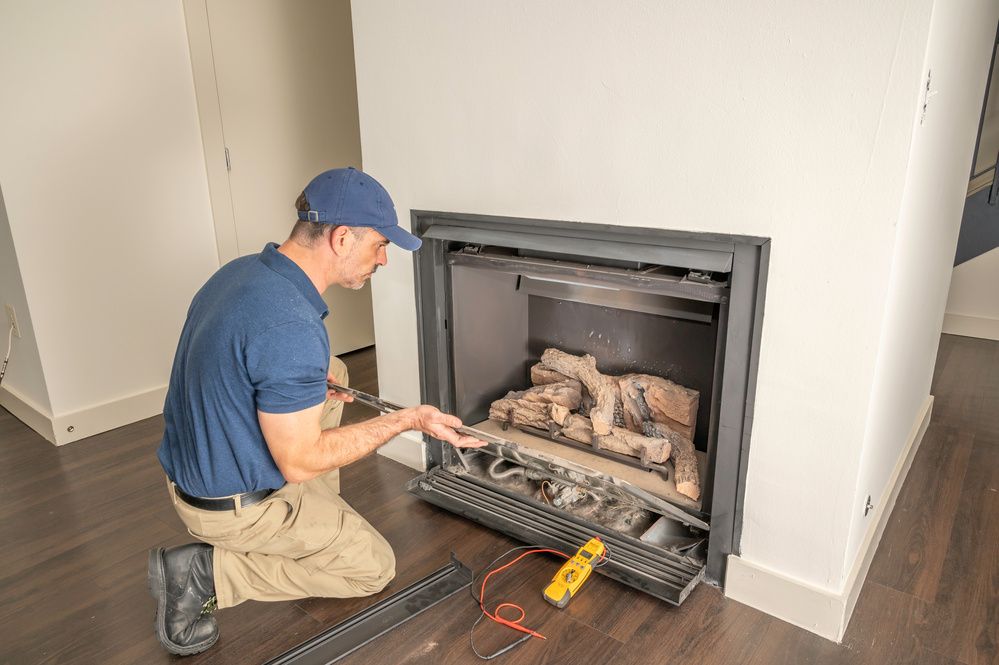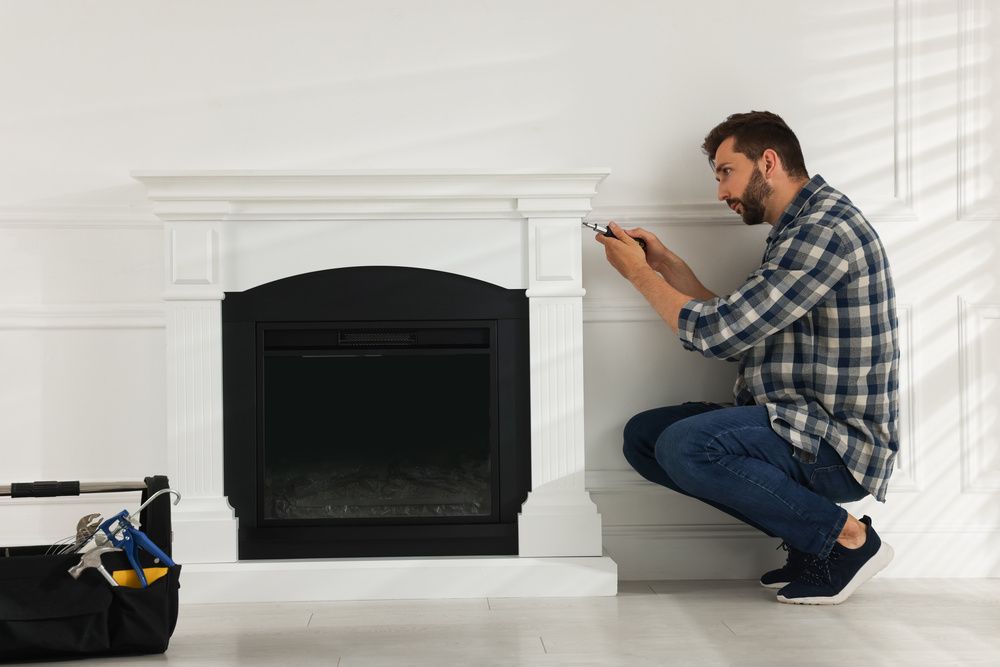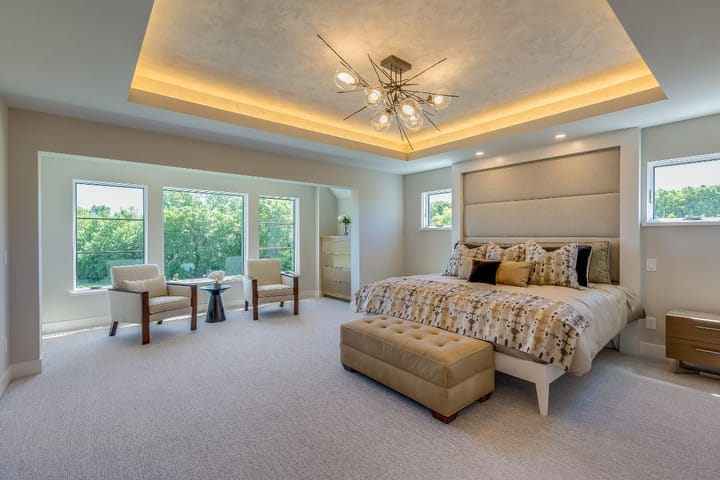7 Things To Consider Before Installing A Fireplace
A fireplace won’t only bring warmth in the cold season, but it’ll also add value to your property and help create a welcoming ambiance. It also gives your friends and family a chance to relax, particularly during winter.

A fireplace won’t only bring warmth in the cold season, but it’ll also add value to your property and help create a welcoming ambiance. It also gives your friends and family a chance to relax, particularly during winter. However, before you install a fireplace in your house, there are several things you should understand.
While a fireplace has the added benefit of increasing your home’s value, you can’t just install one wherever and whenever you want. You should think about the entire process. That said, below are some of the things to consider before installing a fireplace:
Know Your Style Preferences
There are various styles of fireplaces. Before you start with fireplace installation, monitor growing trends of the best fireplaces you can consider for your home.
- Traditional vs. Modern: Do you prefer a traditional or modern look? Traditional fireplaces are often made of brick or stone, while modern fireplaces can have sleek lines and minimalist designs.
- Materials: What materials do you want your fireplace to be made of? Wood, stone, and brick are popular choices, but there are also options for metal or glass.
- Color: What color scheme do you want to achieve? If you have a particular color in mind, you may want to choose a fireplace that complements or contrasts with that color.
- Size: The size of your fireplace will depend on the size of the room and your personal preferences. Do you want a large, dramatic fireplace, or a smaller, more subtle one?
- Mantel: The mantel is an important part of the fireplace and can be customized to your preferences. Do you want a simple, streamlined mantel or one with intricate detailing?
- Hearth: The hearth is the area directly in front of the fireplace. It can be made of the same material as the fireplace or something different, such as tile or stone.
- Accessories: Accessories like fireplace screens and tool sets can add to the overall look of your fireplace. Consider what types of accessories you want and how they will fit in with your style preferences.

Now, depending on your preference, you can choose how to construct these elements. However, you must ensure that functionality meets aesthetics to guarantee a desirable result that won't waste your money and hard work.
2. Choose The Best Type Of Fireplace Wisely
Affordability, upkeep, and aesthetics will all play a role in determining the best fireplace for your property. If you want to make your home look more expensive but are confused with the options available, here are the three kinds of fireplaces you can consider:
- Wood-burning fireplaces: These are traditional fireplaces that burn wood logs. They require a chimney for ventilation and produce smoke and ash. Wood-burning fireplaces require regular maintenance, such as cleaning the chimney, and can be less energy-efficient than other types of fireplaces. However, they offer the classic fireplace ambiance and the comforting sound and scent of burning wood.
- Gas fireplaces: Gas fireplaces are fueled by natural gas or propane and do not require a chimney. They are easier to install and use than wood-burning fireplaces and are more energy-efficient. Gas fireplaces can be turned on and off with a switch or remote control, and some models can even be programmed to turn on and off automatically. They produce no smoke or ash and are generally considered safer than wood-burning fireplaces.
- Electric fireplaces: Electric fireplaces are powered by electricity and do not require a chimney or venting. They are easy to install and use and are the most energy-efficient of the three types. Electric fireplaces come in a wide variety of styles and sizes, and some models even have heating elements to provide warmth. However, they do not offer the same ambiance as a real flame, and some people may find the artificial flames less satisfying than the real thing.
3. Understand The Local Building Codes
Before installing a fireplace, it's important to understand the local building codes in your area. Here are some things to consider:
- Permits: Depending on the type of fireplace and the extent of the installation work, you may need to obtain a permit from your local building department before beginning work. Make sure to check with your local authorities to determine what permits are required.
- Clearance: Local building codes may specify minimum clearances for the fireplace and any surrounding materials, such as walls, floors, and ceilings. Make sure to follow these requirements to ensure that the fireplace is safe and up to code.
- Ventilation: Local building codes may also specify requirements for ventilation and air flow around the fireplace. Make sure to follow these requirements to ensure that the fireplace is safe and efficient.
- Fuel Type: Some local building codes may have specific requirements for the type of fuel that can be used in a fireplace. For example, in some areas, wood-burning fireplaces may be prohibited due to air quality concerns.
- Professional Installation: In many cases, local building codes require that fireplaces be installed by a licensed professional. Make sure to hire a qualified contractor who can ensure that the fireplace is installed safely and up to code.
- Inspection: After the installation is complete, local building codes may require a final inspection to ensure that the fireplace meets all safety requirements. Make sure to schedule an inspection and obtain any necessary approvals before using the fireplace.
- Other Requirements: Depending on your local building codes, there may be other requirements to consider, such as fire safety equipment, smoke alarms, or fire extinguishers. Make sure to familiarize yourself with all applicable requirements before installing a fireplace.
4. Keep Location And Size In Mind
When considering installing a fireplace, it's important to keep the location and size in mind. The location of the fireplace will impact its usability and aesthetic appeal, and the size of the fireplace will depend on the space where it will be installed and the desired heat output. Careful consideration of these factors will ensure that the fireplace is both functional and visually appealing. It's also important to consider the clearance requirements for the fireplace, both in terms of local building codes and the space available in the room. By taking the time to carefully consider the location and size of the fireplace, you can create a cozy and inviting space that will be a focal point of your home for years to come.
5. Consider The Cost
In addition to the location and size of the fireplace, it's important to also consider the cost. Fireplaces can range from relatively inexpensive to very costly, depending on the type of fireplace, the materials used, and the installation costs.
For example, a gas fireplace may be more expensive to install than an electric fireplace, but may be less expensive to operate in the long run. Similarly, a large, custom-built fireplace made from high-end materials may be more expensive upfront, but can add significant value to your home.
When considering the cost of a fireplace, it's important to factor in both the upfront costs and the long-term operating costs, such as fuel and maintenance. By carefully weighing the costs and benefits of different types and sizes of fireplaces, you can choose a fireplace that meets your needs and budget while also adding value and comfort to your home.
6. Consider Energy Efficiency
When considering installing a fireplace, it's important to keep energy efficiency in mind. Fireplaces can be a significant source of heat loss, so choosing an energy-efficient model can help you save money on your energy bills and reduce your environmental footprint. Gas fireplaces tend to be more energy-efficient than wood-burning fireplaces because they burn more cleanly and can be vented directly outside.
If you choose a wood-burning fireplace, install a fireplace that burns wood efficiently and reduces the outside air particulate emissions. Moreover, instead of the traditional masonry fireplaces, you can use fireplace inserts to minimize heat loss.
7. Decide Whether Or Not To Hire Professionals
Before deciding whether or not to hire professionals for your fireplace installation, it's important to consider a few key factors. First, consider your own level of experience and knowledge when it comes to fireplace installation. If you have experience with home renovation or construction projects, you may feel comfortable tackling a fireplace installation on your own. However, if you have little or no experience with this type of work, it may be safer and more efficient to hire professionals.

Second, consider the complexity of the installation. If you're installing a gas fireplace, for example, there may be gas lines that need to be installed and vented properly. Similarly, if you're installing a wood-burning fireplace, there may be requirements for a proper chimney or flue. These aspects of the installation can be tricky and may require specialized knowledge or equipment.
Third, consider the safety implications of the installation. A poorly installed fireplace can pose serious safety risks, including fire and carbon monoxide poisoning. If you're not confident in your ability to install the fireplace safely, it's best to leave it to the professionals.
Ultimately, the decision to hire professionals will depend on your individual circumstances and level of comfort with the installation process. While professionals may come with an additional cost, they can provide peace of mind and ensure that your fireplace installation is done safely and efficiently.
The Advantages Of Installing A Fireplace
Regardless of the type of fireplace you select, installing a fireplace can provide the following benefits:
- Warmth and comfort: A fireplace can provide heat and comfort on cold winter days and nights, making your home feel cozy and inviting. You can enjoy the warmth of a fire while relaxing with your family or reading a book.
- Energy efficiency: Fireplaces that are properly designed and installed can be energy-efficient, reducing your heating bills in the long run. Modern fireplaces can be equipped with energy-saving features such as air-circulating fans and glass doors that prevent heat loss.
- Ambiance and aesthetics: A fireplace can add to the ambiance of your home, creating a warm and inviting atmosphere. It can also enhance the look of your living space, providing a focal point that adds character and charm to any room.
- Property value: A fireplace can increase the value of your property, making it more attractive to potential buyers if you decide to sell your home in the future.
- Eco-friendly: Wood-burning fireplaces can be an eco-friendly heating option as long as you use sustainable, locally sourced firewood. Additionally, some modern fireplaces use bioethanol or natural gas, which produce fewer emissions than traditional wood-burning fireplaces.
Wrapping Up
A fireplace is no doubt an excellent addition to your home. It doesn’t only boost your home’s value, but it also improves its charm while providing an inviting and warm atmosphere. However, before installing one, you must consider the above considerations to make a well-informed decision. Just remember that pricing may vary depending on your preferred fireplace type.




Comments ()